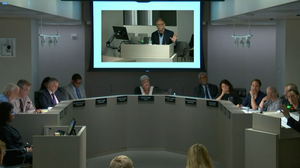Learning from Garment Center Misses and Wins When Seeking Future Mixed-Use Solutions
TESTIMONY REGARDING THE GARMENT CENTER REZONING

Good morning and thank you for the opportunity to testify. I am Adam Friedman, Director of the Pratt Center for Community Development and a member of the working group assembled by the Borough President and Council Speaker. I was previously President of the Garment Industry Development Corporation and have been actively involved with the Special Garment Center District since it was created.
I support the rezoning not because this is the ideal solution, but because I am a realist and recognize there is neither the time nor will to correct past mistakes. The current strategy is far, far better than what the city proposed 18 months ago when it was just going to rezone the Special District with virtually no measures for retaining the Garment Center.
The challenge is now for the city to make good on its new strategies and to align the timing of the rezoning with their implementation. Securing up to 500,000 sq ft of space through tax incentives and non-profit ownership is not a small challenge but essential to approval of the rezoning.
I want to use my time to correct some misunderstandings about the industry and the Special Districts in the hope that we can learn the lessons of the Garment Center and not repeat the mistakes, which I fear the city is doing as it begins to map “Innovation Districts.”
New York City remains the greatest concentration of fashion in the world: There are approximately 900 design houses and over one million square feet of space in production in the Garment Center. The industry is constantly renewed by the city’s four design schools and our reputation as the design capital of the US. It is the textbook example of a vibrant ecosystem.
That ecosystem has been sustained by the Special District which was really the first zoned Innovation District. Contrary to what is often represented, the Special District was a success. It was never intended to save the industry from international global competition. It was intended to protect an ecosystem with a mix of high-rent showrooms and low-rent production space that was essential to the showrooms - a modern day commons. The Special District was the strategy to protect the commons.
The economics of the Special District changed and the city lacked the political will to enforce the zoning. When the District was created, showrooms paid higher rent then offices. But the growth in office rents far outpaced showroom rents. The building owners’ financial interest for maintaining the showrooms, and consequently for maintaining the commons, disappeared.
But that doesn’t mean the production commons are less important to the industry. While the industry is less centralized then it was 30 years ago, we heard testimony from designers and manufacturers from all over the city that they continue to come into the Garment Center whenever they need its services, whether that is for buying thread or marking, grading and cutting.
So it remains critical to the citywide industry to maintain some of the production commons in a central location, the Garment Center.
I strongly support the city’s efforts to subsidize the acquisition of space by a non-profit that will provide space for the industry, a strategy we’ve been advocating for years. If ever there was a situation justifying some version of tax increment financing or value recovery, this would be it. The city could have financed the acquisition of space, changed the zoning and then recovered some of the increased value to pay for the acquisition.
For years the City has failed to enforce the zoning and messaged the real estate community that the zoning was not enforceable and would soon be changed, incentivizing illegal behavior.
The City continues to implement similar strategies for mixed use projects to create new innovation districts without addressing the fundamental enforcement problem. Two years ago the City enacted Enhanced Business Area zoning along the Kent Avenue corridor in Brooklyn to encourage mixed use buildings, just like in the Garment Center. While it cut the original proposal from 14 to 1 block to allow development of 25 Kent as “an experiment,” it recently certified a second EBA project and there is a third in the pipeline. Needless to say, the city has not waited for the results of “the experiment,” and it has done nothing to address the flawed enforcement.
Let me conclude by recognizing the work and energy of staff at EDC, the Borough President’s and Speaker’s Offices and others, and the attention the Borough President and the Speaker have personally dedicated to address this very, very challenging issue. The city is headed in the right direction for the Garment Center if it nails down sufficient space. But it should also try to learn the right lessons.